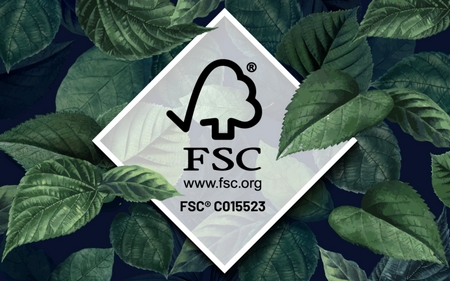

We ship throughout Europe free of charge and without further costs! On request also anonymous and with your own delivery bill. More
Products discovered cheaper elsewhere? We undercut the price by 5%. Just use our lowest price guarantee
For printers and agencies we offer special reseller conditions

4/0 or 4/4 color = This refers to the printed pages of a product, whether they are printed in multiple colors, in one color, on one side or on multiple sides. 4/0 printable business cards are printed 4-color on one side (i.e. in CMYK), 4/4 color printable flyers on the other hand are printed four-color on both sides.
CMYK = this term refers to the color system used in the printing industry. It stands for "C "yan, "M "agenta, "Y "ellow (yellow), "K" black. These colors are used to mix printing inks. When you create your print data with your graphics program, you can determine the percentages that should be used of each color.
RGB = Stands for red, green, blue. This color system is not used in printing, but is ubiquitous in photo cameras, scanners, and monitors.
CutContour = A CutContour or Cut Contour is a closed vector shape created in a graphics program and used for die-cutting labels, plate materials and other printed matter.
Vector, vector paths, paths = Vectors denote objects and lines that have been created in a graphics program. Vector graphics can be enlarged to any size without any loss of quality. Vectors also offer the property that any vector object can be created with exact color percentages.
Convert fonts to paths = Your supplied print design is placed on the print sheet by a graphic designer in prepress. To do this, he must open and/or edit the design. This process cannot be performed if your supplied texts and words are not converted to paths if you have used a special font. The reason: the graphic designer may not have your used font, so the system replaces it with another font. The result is an incorrect print image with unwanted fonts. To prevent this from happening, you should convert the fonts to paths beforehand.
Bleed = In the printing process, especially when cutting your print products, there are certain cutting tolerances. For this reason, a bleed allowance is always created in the print data, to which important texts and graphics must have a certain distance so that they are not cut off during production. A bleed often amounts to 2 to 4 mm. For this reason, designs for business cards are created in the format 8.9x5.9cm, after production the cards are 8.5x5.5cm.
Film lamination or cellophaning = With this type of finishing, the print medium (such as business cards, flyers, but also displays and packaging) is subsequently covered with a PVC film in gloss or matte. The advantage is that the surface is protected and conveys better stiffness. In addition, the materials appear more velvety with a matte lamination, while the printing inks stand out even more with a glossy lamination.
Deep embossing, blind embossing = This further processing type is used for the haptic highlighting of individual elements, such as your logo. It is possible in the packaging sector. In order to calculate an embossing, we need the exact dimensions of the element to be embossed. If you want to emboss your logo, for example, we need the dimensions of the logo to calculate the cost of a magensium stamp. With such a stamp, the cardboard will be embossed in your desired shape.
DPI = You will read this term more often when it comes to print data creation. DPI stands for dots per inch. In image reproduction, dot density is a measure of the detail of a rasterized visual display and thus one of the quality aspects of the technical reproduction process. Dot densities are specified, for example, in four-color printing or in a screen reproduction. To obtain a high-resolution result, your graphics and images should be created with at least 300 DPI.
g/m² = 170g/m², 350g/m², what does it actually mean? It describes the thickness and strength of the paper, and the weight that a sheet of one square meter of this paper would weigh. So at 350g/m², which we use for business cards, a sheet measuring one meter by one meter weighs exactly 350 grams.